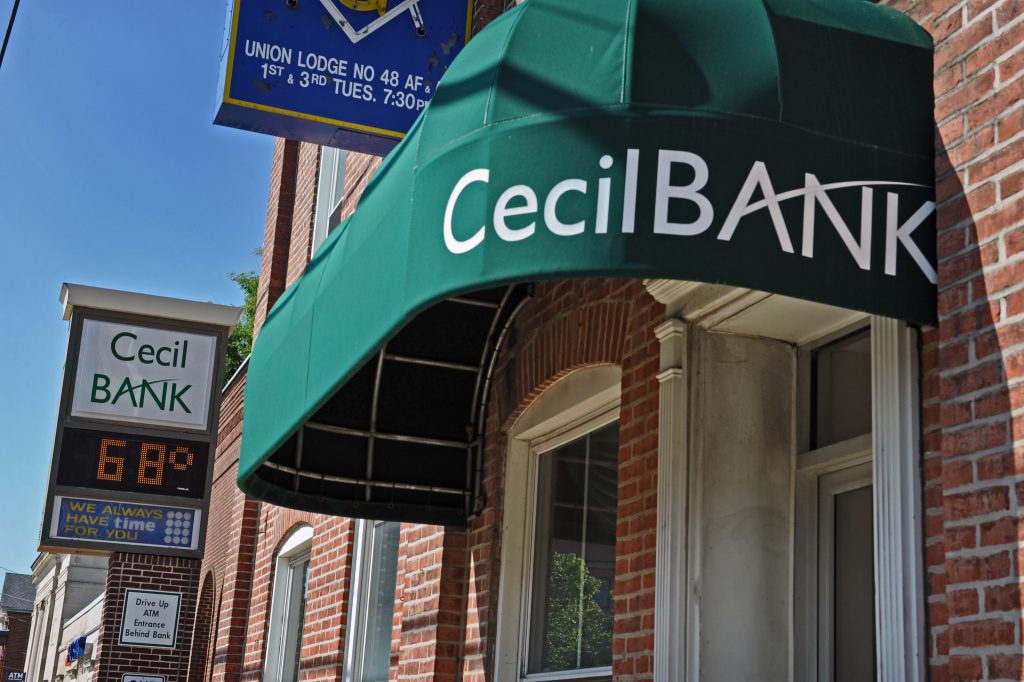FORMER CECIL BANK PRESIDENT SENTENCED TO TWO YEARS IN FEDERAL PRISON FOR BANK FRAUD

Rising Sun, Maryland – Mary Beyer Halsey, 59, of Rising Sun, Maryland was sentenced today to two years in federal prison, followed by five years of supervised release, U.S. Attorney Robert K. Hur announced. Halsey previously pleads guilty to federal charges of conspiracy to commit bank fraud, receipt of a bribe by a bank official, and false statement in bank records, in connection with the straw purchase of a home in Rising Sun, Maryland, upon which Cecil Bank had foreclosed. U.S. District Judge Deborah K. Chasanow also ordered Halsey to forfeit interest in the Rising Sun property and to pay $300 in special assessments and restitution to the bank in the amount of $145,000. “Mary Beyer Halsey will now serve time in federal prison after she used her position as President and CEO of Cecil Bank for her personal benefit, causing a loss to the bank, which had already received federal taxpayer funds as part of the Troubled Asset Relief Program,” said U.S. Attorney Robert K. Hur. “Corrupt bank officials undermine the public’s trust in our financial system.” According to court documents, Halsey conspired with Daniel Whitehurst, an employee of a real estate development company that did business in Maryland, to defraud Cecil Bank and another bank to purchase a home through false pretenses, representations, and promises. Halsey agreed to help Whitehurst to obtain a line of credit from Cecil Bank, in exchange for Whitehurst agreeing to serve as the straw purchaser of 127 Ebenezer on behalf of Halsey. Halsey later participated in a loan committee meeting at Cecil Bank that considered and approved a $650,000 line for credit for Whitehurst and a $500,000 line of credit for his business partner.
Halsey admitted that at her request, Whitehurst visited 127 Ebenezer and provided Halsey with an estimate of the costs to update the house. Whitehurst determined that beyond replacing the kitchen subflooring at a cost of about $1,000, there were no significant repairs needed. A full appraisal on September 10, 2012, reflected a market value of $295,000. To support the below-market price that Halsey wanted to pay, Whitehurst included in the letter of intent a list of lower-priced home sales in the same area that was not comparable to 127 Ebenezer and therefore was not reflective of the property’s actual market value.
On the same day, Whitehurst e-mailed Cecil Bank his offer to purchase 127 Ebenezer for $145,000, during a meeting of the Cecil Bank Board of Directors, Halsey advised the Board that Whitehurst had made a purchase offer of $140,000 for the property, $5,000 less the actual offer. To support the below-market price of $140,000, Halsey falsely characterized the property as having “structural deficiencies [that] will require significant repairs.” Halsey did not disclose her personal interest in the property, nor Whitehurst’s role as her nominee to acquire the property on her behalf. The Board authorized Halsey to “negotiate the best price.” Thereafter, Whitehurst submitted a contract for him to purchase 127 Ebenezer from Cecil Bank for $150,000, which Halsey signed on August 17, 2012 on behalf of Cecil Bank.
On November 21, 2012, the settlement of 127 Ebenezer was held with Halsey representing Cecil Bank as the seller, and Whitehurst as the purported purchaser, selling the property to Whitehurst for $150,000. Both signed the HUD-1 form which falsely represented that Whitehurst had paid approximately $52,566 at settlement, when in fact, the down payment and all related closing costs were paid from the $75,000 Halsey had wired to Whitehurst’s bank account beforehand. From October 31, 2012 through March 29, 2013, Halsey transferred an additional $60,000 to Whitehurst to cover the cost of the upgrades to the house that they had previously discussed, as well as to reimburse Whitehurst for mortgage payments he made on the property.
In December 2012, in response to a question from a bank examiner for the Federal Reserve Bank of Richmond inquiring about the sale of the property to Whitehurst, Halsey falsely stated that she was “not totally familiar with [that] property” and that the bank had difficulty marketing the property and had not listed it with a realtor because of “issues with the county over the bonds outstanding.”
In April 2013, federal agents began interviewing employees and other borrowers about banking irregularities at Cecil Bank. Halsey never told the bank that she was the true purchaser of 127 Ebenezer, nor did the bank know that Halsey and Whitehurst had orchestrated the sale of the foreclosed property at the fraudulent price of $150,000, instead of the appraised pre-renovation price of $295,000.
As a result of Halsey’s misrepresentations and omissions, the bank lost approximately $145,000. This case was the product of a joint investigation by the Office of the Special Inspector General for the Troubled Asset Relief Program (SIGTARP), the Federal Housing Finance Agency, Office of Inspector General (FHFA-OIG), the Mid-Atlantic Region; the Federal Deposit Insurance Corporation, Office of Inspector General (FDIC/OIG), New York Region; and the Small Business Administration, Office of Inspector General (SBA/OIG).





Anyone who has dealt with this crime syndicate posing as a bank is not surprised.